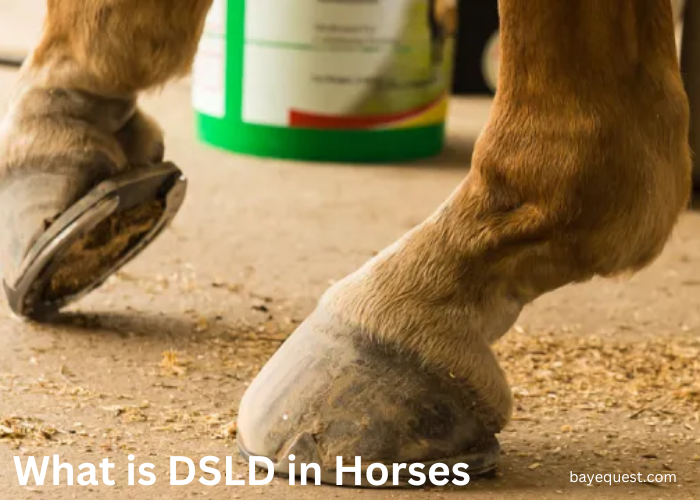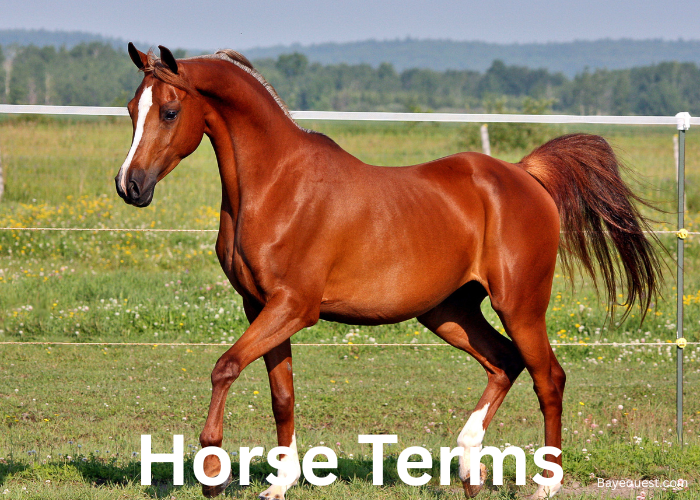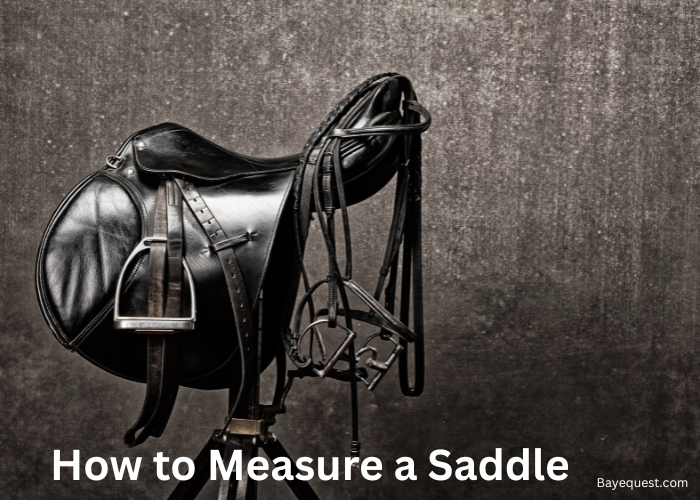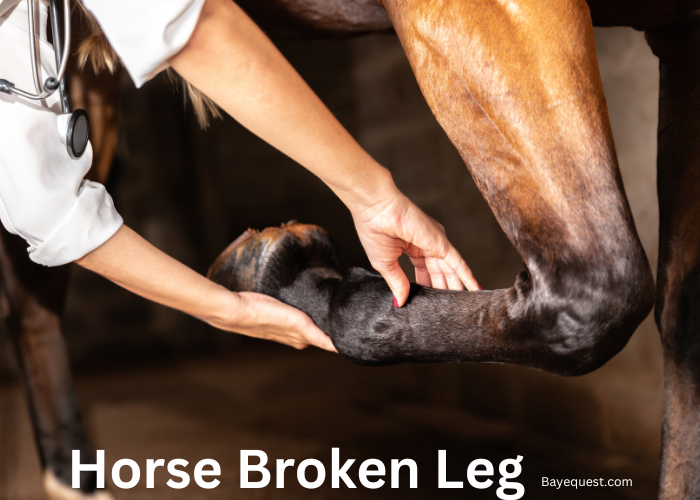DSLD, or Degenerative Suspensory Ligament Desmitis, is a condition that worries many horse owners.
It affects the suspensory ligaments in a horse’s legs, causing pain and mobility issues.
At first, the signs can be easy to miss. But as it progresses, the horse’s quality of life can drastically change.
Knowing the symptoms and understanding the condition can make all the difference. Early detection is key.
In this blog, we’ll break down what DSLD is, how to spot it, and what you can do to help your horse manage it.
What is DSLD in Horses? Key Takeaway
DSLD is a progressive condition in horses that weakens the suspensory ligaments in their legs. It leads to swelling, lameness, and changes in gait. While there is no cure, early diagnosis and management can help improve a horse’s comfort and mobility.
What is Degenerative Suspensory Ligament Desmitis (DSLD)?
Degenerative Suspensory Ligament Desmitis is a progressive disorder affecting the suspensory ligaments in horses.
The suspensory ligament is a key structure in the horse’s leg, supporting the fetlock joint and absorbing the stress during movement.
In DSLD, these ligaments degenerate over time, losing their normal structure and function.
Under normal conditions, suspensory ligaments are strong and elastic, allowing for flexibility and movement.
In horses with DSLD, the ligaments become weakened and inflamed.
The fibers in the ligaments start to break down and are replaced by abnormal, less elastic tissue.
This degeneration leads to the overstretching of the ligaments, which compromises the stability of the horse’s leg.
Histologically, DSLD is characterized by the accumulation of proteoglycans, abnormal proteins that disrupt the ligament’s structure.
This results in chronic inflammation and deterioration of the ligaments’ ability to support the horse’s weight.
Over time, the ligaments continue to lose their elasticity, causing an irreversible weakening of the affected limbs.
DSLD is not limited to the suspensory ligaments.
The condition can also affect other connective tissues in the body, making it a systemic issue rather than a localized one.
Read also: What are Kissing Spines in Horses.
History of Degenerative Suspensory Ligament Disease
The history of DSLD traces back to its recognition as a distinct condition affecting horses within specific breeds.
Initially, DSLD was thought to be a common form of suspensory ligament injury caused by overuse or trauma.
However, veterinarians and researchers began noticing that in certain horses, particularly older ones, the condition progressed in a more severe and chronic manner than typical injuries.
DSLD first gained significant attention in Peruvian Pasos during the 1990s.
Breeders and veterinarians observed a higher incidence of suspensory ligament problems in this breed.
Over time, researchers began to uncover that DSLD was more complex than originally thought.
It was identified in Warmblood breeds such as, Arabians, and Saddlebreds.
DSLD affects connective tissue throughout the body, making it a systemic disorder rather than one isolated to the ligaments in the limbs.
Today, DSLD is recognized as a degenerative disease involving abnormal protein deposits (proteoglycans) in connective tissues.
Causes and Risk Factors of DSLD
Knowing the causes and risk factors of DSLD can help you better care for your horse. Let’s explore some of the causes:
Genetic predisposition
Certain horse breeds, such as Peruvian Pasos, Warmbloods, and Arabians, are more susceptible to developing DSLD.
Researchers believe that a genetic component plays a significant role in these breeds, making them more prone to the disease.
This genetic link means that DSLD can often be passed down through generations.
Age
As horses age, they become more vulnerable to DSLD.
Older horses are at a higher risk because of the natural wear and tear that occurs in their ligaments over time.
This degeneration can weaken the suspensory ligaments, leading to the onset of DSLD.
While younger horses can develop the condition, it is more commonly diagnosed in older animals.
Breed
Specific breeds, especially Peruvian Pasos, have been found to have a higher occurrence of DSLD.
Although other breeds such as Arabians, Warmbloods, and Saddlebreds are also at risk, Peruvian Pasos tend to have the highest prevalence.
The genetic factors tied to certain breeds make them more likely to suffer from this disease.
Systemic Connective Tissue Disorder
DSLD is not just a problem confined to the ligaments in a horse’s legs. It’s increasingly recognized as a systemic connective tissue disorder.
Proteoglycans, build up in connective tissues throughout the body, affecting more than the suspensory ligaments.
This widespread tissue degeneration suggests that DSLD is a deeper systemic issue rather than a simple injury to the legs.
Overuse and strain
Horses that are subjected to repetitive stress or strenuous activities may experience an increased risk of DSLD.
Overuse or heavy workloads can exacerbate ligament strain. This may lead to further weakening and degeneration of the suspensory ligaments.
High-impact activities can accelerate the progression of the disease.
Inflammation
Chronic inflammation is another factor that can contribute to the development of DSLD.
When ligaments are consistently inflamed, the body’s normal healing and repair processes are disrupted.
This prolonged inflammation weakens the connective tissue, leading to the degeneration characteristic of DSLD.
Inflammatory responses may worsen over time, hastening the progression of the disease.
Signs and Symptoms of DSLD
1. Swelling in the legs
One of the earliest signs of DSLD is noticeable swelling in the horse’s legs, particularly in the hind limbs.
This swelling may be persistent or worsen after exercise, and the affected areas may feel warm to the touch.
2. Lameness or stiffness
Horses with DSLD often show signs of lameness or stiffness, especially when first starting to move after resting.
This stiffness can progress over time, making it harder for the horse to walk, trot, or run comfortably.
3. Dropped fetlocks
As the suspensory ligaments weaken, the horse’s fetlocks may begin to sink or drop lower than normal.
This is a classic sign of DSLD and indicates severe ligament damage.
4. Changes in gait
Horses with DSLD may develop an uneven or awkward gait as they try to compensate for the discomfort in their legs.
You may notice them stumbling, dragging their feet, or being reluctant to move.
5. Reluctance to move
A horse suffering from DSLD might show reluctance to walk or engage in physical activity.
They may stand still for longer periods, avoiding movement to reduce pain.
6. General discomfort
In later stages, horses with DSLD may appear uncomfortable even at rest.
They may shift their weight frequently to avoid putting pressure on the affected limbs.
How to Diagnose DSLD
Diagnosing DSLD involves a combination of clinical evaluation and diagnostic imaging.
A veterinarian will first conduct a thorough physical exam, checking for key symptoms.
Observing how the horse moves and stands is crucial in identifying early signs of ligament degeneration.
To confirm the diagnosis, veterinarians often use ultrasound imaging to examine the suspensory ligaments.
Ultrasound allows them to see changes in the ligament’s structure, such as fiber damage or abnormal thickening, which are signs of DSLD.
The presence of abnormal tissue, such as proteoglycan deposits, may also be detected during the scan.
In some cases, X-rays may be used to evaluate any related joint or bone issues. However, ultrasound is more effective for assessing soft tissue like ligaments.
Additionally, biopsies of the ligaments might be performed in certain cases to analyze the tissue in more detail.
Since DSLD can affect multiple legs, the vet needs to examine all limbs.
Degenerative Suspensory Ligament Desmitis Prognosis
The prognosis for DSLD in horses is generally poor due to the progressive nature of the disease.
Once a horse is diagnosed, the condition continues to deteriorate, affecting the quality of life and mobility over time.
While statistics and outcomes vary depending on the severity of the case, nearly 100% of horses with DSLD will experience a worsening of symptoms over time.
Over 75% of horses with DSLD will become unsuitable for riding or strenuous activity within a year of diagnosis.
Around 40-60% of horses with DSLD are humanely euthanized within two years of diagnosis due to the severity of pain and immobility.
Over 50% of horses with DSLD exhibit systemic connective tissue degeneration, affecting ligaments beyond the limbs.
With good management, some horses may live comfortably with mild activity.
How to Treat and Manage DSLD
While there is no cure for DSLD, there are several ways to manage the condition and improve the horse’s quality of life.
Here’s how to treat and manage DSLD:
1. Pain management
Non-steroidal anti-inflammatory drugs such as phenylbutazone are commonly used to reduce pain and inflammation.
These medications can help the horse feel more comfortable and improve mobility in the short term.
2. Supportive care
Providing leg wraps or compression bandages can help reduce swelling in the legs and offer support to weakened ligaments.
This can slow the progression of ligament damage and ease discomfort.
3. Corrective shoeing
Special corrective shoeing or trimming can help support the horse’s feet and reduce strain on the suspensory ligaments.
Farriers may use wedge shoes or heel support to alleviate pressure on the ligaments.
4. Controlled exercise
Light, controlled exercise can help maintain muscle strength and flexibility without overloading the ligaments.
Hand-walking or gentle turnout in a well-padded area can be beneficial, but intense physical activity should be avoided.
5. Diet and weight management
Keeping the horse at a healthy weight reduces strain on the ligaments.
A balanced diet with the right supplements, such as omega-3 fatty acids and glucosamine, may support joint and ligament health.
6. Alternative therapies
Some horse owners find relief for their horses through alternative therapies like acupuncture, chiropractic adjustments, or massage therapy.
These treatments may help relieve pain and improve circulation in affected areas.
7. Supplements
Joint and ligament supplements, such as hyaluronic acid, chondroitin, and MSM (methylsulfonylmethane), are sometimes used to support joint and connective tissue health.
These supplements may help slow degeneration, though their effectiveness varies.
8. Rest and stall confinement
In more advanced cases, horses may need to be confined to a stall to minimize movement and prevent further damage.
Long-term rest can help limit ligament deterioration, though it may not halt the progression of the disease.
9. Euthanasia (Severe cases)
When the condition becomes too painful and affects the horse’s quality of life, humane euthanasia may be considered.
It is often the most compassionate option in severe cases where other management strategies are no longer effective.
FAQs
Is DSLD hereditary?
Yes, DSLD is a hereditary component. Certain breeds, like Peruvian Pasos, Warmbloods, and Arabians, are more genetically predisposed to developing the condition.
Can you ride a horse with DSLD?
You should not ride a horse with DSLD. The condition weakens the suspensory ligaments, riding can increase the strain on the legs and worsen the horse’s discomfort.
Conclusion
DSLD is a serious condition that can change the life of a horse.
While there is no cure, early detection and proper management can make a big difference in their comfort and quality of life.
By understanding the signs and knowing what to look for, you can help your horse live as comfortably as possible.
Keep a close eye on their health, and work with your vet to develop a plan that supports their well-being.
Your care and attention can truly make all the difference.








